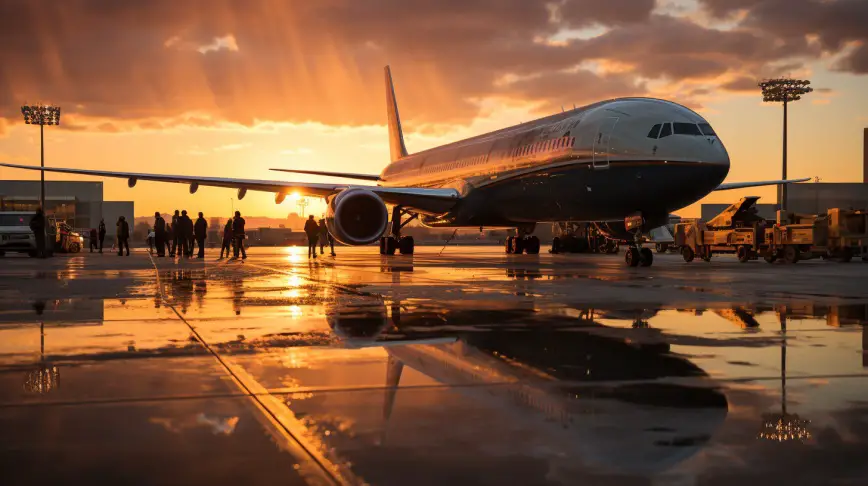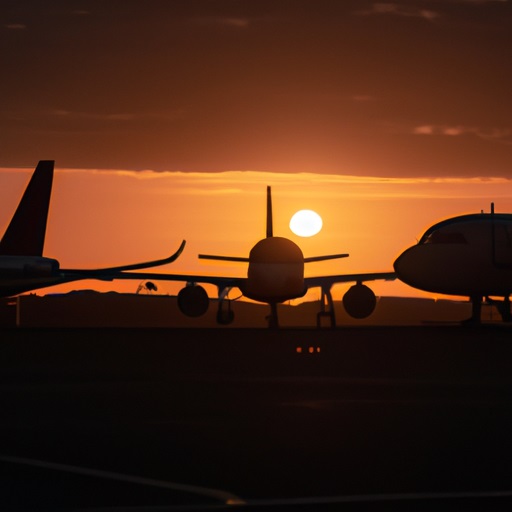
Diversifying Revenue Streams For Airlines
In today’s aviation industry, airlines face numerous challenges. To survive and thrive, airlines must adapt by exploring alternative revenue sources and diversifying their income streams. Relying solely on traditional revenue sources, such as passenger ticket sales and onboard services, can leave airlines vulnerable to economic fluctuations and shifts in consumer behavior. Therefore, diversifying revenue streams can be crucial to the survival of airlines.
Traditional Revenue Sources in the Aviation Industry
The aviation industry has long depended on a few key revenue sources to sustain its operations. These include:
| Revenue Source | Description |
|---|---|
| Passenger Ticket Sales | This remains the largest source of revenue for most airlines. Ticket sales generate income from both economy and premium class seats. |
| Baggage Fees | Airlines charge fees for checked bags, extra luggage, and overweight luggage as an additional revenue stream. |
| Onboard Services | Airlines offer onboard services such as food and beverages, Wi-Fi, entertainment, and duty-free shopping. These services generate additional revenue for airlines. |
While these traditional revenue sources have historically been effective, they have also proven to be vulnerable in times of crisis, such as during the COVID-19 pandemic. Reduced demand for air travel has significantly reduced the income generated through these sources, highlighting the need for airlines to look for alternative revenue streams.
Explore New Opportunities for Revenue Generation
Airlines have traditionally relied heavily on passenger ticket sales, baggage fees, and onboard services as their primary revenue streams. However, to adapt and survive, airlines must explore new revenue streams. Fortunately, there are several potential opportunities for revenue diversification that airlines can consider.
Cargo Services
One area of potential revenue growth for airlines is cargo services. During the pandemic, many airlines adapted their operations to focus on cargo transportation, which proved to be a crucial revenue source. As global trade continues to rebound, cargo services present significant growth potential for airlines.
For example, Air Canada has expanded its cargo services to transport goods ranging from pharmaceuticals to electronics, generating new revenue streams for the airline. Similarly, Delta Air Lines has launched a new investment arm to explore opportunities in cargo and logistics.
Partnerships with Other Industries
Airlines can also explore partnerships with other industries to diversify their revenue streams. For instance, airlines can team up with travel companies, hotels, or car rental services to offer bundled packages that include air travel and other travel-related products. This can help airlines attract new customers and generate revenue beyond traditional ticket sales.
United Airlines has partnered with Marriott Bonvoy to offer customers exclusive travel packages that include flights, accommodations, and activities. This partnership has helped United Airlines generate additional revenue and increase customer loyalty.
Ancillary Services
Ancillary services, such as in-flight Wi-Fi, seat upgrades, and travel insurance, provide another potential source of revenue for airlines. These services can be offered as add-ons during the booking process or even during the flight itself. By providing customers with more options and greater flexibility, airlines can increase their revenue per passenger.
For example, American Airlines offers customers a range of ancillary services, including priority boarding, lounge access, and in-flight entertainment. These services have helped the airline generate additional revenue and improve the overall customer experience.
Loyalty Programs
Loyalty programs are an effective way for airlines to generate revenue and improve customer retention. By offering perks, such as priority boarding, free checked bags, and access to exclusive lounges, airlines can incentivize customers to choose their airline over competitors.
For instance, Delta Air Lines’ SkyMiles program offers members a range of benefits, such as bonus miles, priority boarding, and access to exclusive events. These perks have helped Delta Air Lines build customer loyalty and generate additional revenue through the sale of miles and other program offerings.
Overall, airlines must be proactive in exploring and implementing new revenue streams to ensure their long-term survival and success. By diversifying their revenue sources, airlines can reduce their reliance on traditional revenue streams and improve their financial performance, customer satisfaction, and overall competitiveness in the aviation industry.
Leveraging Digital Technology for Revenue Diversification
The aviation industry has been quick to adopt digital technologies in recent years. As airlines seek to diversify their revenue streams, digital technology is increasingly playing a critical role in enabling new business models and revenue streams.
E-Commerce Platforms
E-commerce platforms offer airlines a new channel for revenue generation by providing the ability to sell products and services directly to customers. In addition to selling tickets, airlines can use e-commerce platforms to sell ancillary products such as hotel bookings, car rentals, and travel insurance. Airlines can also use these platforms to sell products and services to passengers before and during the flight, such as premium seat upgrades, in-flight Wi-Fi, and duty-free shopping.
For instance, AirAsia has developed a highly successful e-commerce platform, AirAsia.com, which enables customers to book flights, hotels, and other travel products. The platform sells a wide range of travel-related products and services, including holiday packages, airport transfers, and activity bookings. The revenue generated from this platform has enabled AirAsia to diversify its revenue streams and become less reliant on ticket sales.
Mobile Apps
As more and more customers use mobile devices to book travel, airlines are developing mobile apps to provide a convenient and seamless experience. Mobile apps offer airlines an opportunity to engage with customers throughout the entire travel journey and provide personalized offers and recommendations.
For example, Lufthansa’s mobile app offers a range of services to customers, including flight booking, check-in, and real-time flight status updates. The app also allows customers to book ancillary products such as seating upgrades, lounge access, and excess baggage. By providing a seamless and convenient experience, Lufthansa has been able to increase revenue from ancillary products and services.
Data Analytics
Data analytics can help airlines identify new revenue opportunities and optimize existing revenue streams. By analyzing customer data, airlines can gain insights into customer preferences and behavior, allowing them to offer personalized products and services.
For example, Delta Air Lines has developed a data analytics platform, SkyWatch, which provides real-time data and insights to help the airline optimize its operations and improve the customer experience. The platform analyzes data from multiple sources, including flight data, social media, and customer feedback, to provide a holistic view of the customer journey. By using this data, Delta has been able to identify new revenue opportunities and improve its customer service.
Investing in Sustainable Initiatives for Revenue Growth
The aviation industry is undergoing a shift towards sustainability, with increasing pressure from consumers and governments to reduce its environmental impact. Airlines can leverage this trend by investing in eco-friendly practices and initiatives that not only protect the planet but also attract more conscious customers and generate additional revenue streams.
One example of such practices is the use of biofuels, which are made from renewable sources such as cooking oil, algae, or waste. Biofuels offer a cleaner and more sustainable alternative to traditional jet fuel, reducing carbon emissions and improving air quality. Some airlines have already started to use biofuels on select flights and have partnered with biofuel suppliers to ensure a reliable supply chain.
Another way airlines can invest in sustainability is through carbon offset programs, where they invest in renewable energy projects or reforestation initiatives to offset their carbon footprint. Customers can also purchase carbon credits when booking their flights, making them more aware of their environmental impact and contributing to offsetting their carbon emissions.
In addition to these initiatives, airlines can also explore eco-friendly products and services, such as sustainable food options, recycling programs, and reducing single-use plastics onboard. These efforts not only appeal to environmentally-conscious customers but also reduce costs by minimizing waste and improving operational efficiency.
| Benefits of Sustainable Initiatives for Airlines | |
|---|---|
| Attract new customers who value sustainability | Increase brand reputation and loyalty |
| Reduce operating costs through energy and waste efficiency | Diversify revenue streams through eco-friendly products and services |
| Comply with environmental regulations and climate goals | Mitigate long-term business risks |
Investing in sustainability not only aligns with customers’ changing values and expectations, but it also strengthens airlines’ financial performance by reducing costs, mitigating risks, and diversifying revenue streams. As the aviation industry continues to prioritize sustainability, airlines that adapt and invest in eco-friendly practices will be better positioned to thrive in the future.
Overcoming Challenges in Revenue Diversification
While diversifying revenue streams can be a game-changer for airlines, it’s not without its challenges.
| Challenge | Solution |
|---|---|
| Regulatory constraints on new revenue sources | Airlines should stay updated on changes to regulations and work closely with industry bodies to influence policy decisions. |
| Competition in new revenue sources | Airlines can differentiate themselves by identifying unique value propositions and targeting specific segments of customers. |
| Customer resistance to new revenue sources | Airlines should educate customers about the benefits of new revenue sources and tailor their offerings to meet customer needs. |
By being proactive and creative in addressing these challenges, airlines can pave the way for successful revenue diversification.
Key Considerations for Successful Revenue Diversification
When it comes to diversifying revenue streams, airlines must carefully consider a range of factors to ensure success. Here are some key considerations:
- Market research: Conducting market research to identify untapped customer needs and preferences, as well as emerging market trends, can inform the development of new revenue streams.
- Strategic partnerships: Partnering with other companies or industries can enable airlines to offer new products or services, expand their customer base, and increase revenue. For example, airlines can partner with hotels, rental car companies, or travel agencies to offer bundled travel packages.
- Customer segmentation: Segmenting customers based on their needs, preferences, and purchase behavior can help airlines tailor their offerings and pricing to different customer segments, leading to increased revenue and customer loyalty.
- Financial planning: Diversifying revenue streams involves investments and expenses, so airlines must carefully plan and allocate their financial resources to ensure adequate resources for implementation. A clear understanding of costs, revenue projections, and risk management is essential.
Assessing the Financial Impact of Revenue Diversification
Diversifying revenue streams is not just a means of survival for airlines; it can also have a positive impact on their financial performance. By investing in alternative revenue sources and reducing reliance on traditional streams, airlines can increase profitability and ensure long-term sustainability. Let’s take a closer look at the financial impact of revenue diversification for airlines.
| Financial Benefit | Explanation |
|---|---|
| Increased profitability | By generating new revenue streams, airlines can increase their overall revenue, which can directly impact their profitability. For instance, implementing ancillary services or loyalty programs can lead to higher margins and increased per-passenger revenue. |
| Risk mitigation | The COVID-19 pandemic has exposed the vulnerabilities of relying solely on traditional revenue sources, such as passenger ticket sales. By diversifying their revenue streams, airlines can mitigate risks and protect themselves against future disruptions. |
| Long-term sustainability | Investing in sustainable initiatives can not only attract environmentally-conscious customers but also lead to cost savings in the long run. For example, implementing fuel-efficient technologies can reduce operating costs and increase profitability over time. |
It’s important to note that diversifying revenue streams does require an initial investment and may take time to show returns. However, the potential financial benefits can make it a worthwhile endeavor for airlines.
Future Trends in Revenue Diversification for Airlines
The aviation industry is constantly evolving, and airlines must continue to adopt new strategies to diversify their revenue streams to remain competitive. The following trends are likely to shape the future of revenue diversification in the airline industry:
Artificial Intelligence (AI)
AI has the potential to revolutionize the airline industry. Airlines can leverage AI-powered systems to enhance the travel experience for customers, predict demand, optimize pricing, and improve operational efficiency. By using AI, airlines can also gain insights into customer preferences, which can help tailor services and generate additional revenue.
Personalization
Personalization is another trend that is likely to shape the future of revenue diversification. By delivering a personalized experience to customers, airlines can increase engagement and loyalty. This can be achieved through the use of data analytics and AI-powered systems that can recommend services and products relevant to each individual customer.
Partnerships with Tech Companies
Partnering with technology companies can provide airlines with access to the latest innovations and technologies that can help improve the travel experience for customers. Collaborations with companies that specialize in areas such as e-commerce, data analytics, and mobile technologies can help airlines streamline operations, improve customer engagement, and generate additional revenue.
Sustainability
In recent years, sustainability has become a key concern for the airline industry. Airlines can exploit this trend by investing in sustainable initiatives that appeal to consumers who are conscious of the environment. This can include the use of biofuels, reduced waste, and carbon offsetting programs. By promoting a sustainable image, airlines can differentiate themselves from competitors and generate additional revenue.
Virtual and Augmented Reality
Virtual and augmented reality technologies have the potential to transform the travel experience for customers. Airlines can adopt these technologies to enable customers to visualize their destinations, experience new cultures, and engage with products and services in a more immersive way. This can lead to additional revenue through upselling of travel-related products and services.
Blockchain
Blockchain technology can improve the efficiency and transparency of airline operations. By using distributed ledgers to track and verify transactions, airlines can reduce costs and improve security. Blockchain technology can also enable airlines to create new revenue streams through the issuance of loyalty points and digital currencies.
Strategies for Implementing Revenue Diversification
Implementing revenue diversification initiatives can be a complex and challenging task for airlines. However, with the right strategies and planning, it can also be a profitable and sustainable move. Here are some key strategies that airlines can follow to effectively implement revenue diversification:
| Strategy | Description |
|---|---|
| Organizational restructuring | Airlines need to create a structure that allows them to focus on revenue diversification, separating it from their core business operations. They can establish a dedicated team or department, assign specific responsibilities, and set clear objectives. |
| Employee training | It’s crucial for airlines to train their employees on revenue diversification initiatives. This includes educating them on the importance of diversifying revenue streams, providing them with the necessary tools and resources, and incentivizing them for their efforts. |
| Continuous evaluation | Airlines must continuously evaluate their revenue diversification initiatives to identify what’s working and what’s not. They can set up regular feedback loops, gather data and insights, and use these to refine their strategies and tactics. |
By following these strategies, airlines can effectively implement and manage their revenue diversification initiatives, enhancing their profitability, competitiveness, and sustainability in the long run.
FAQ – Frequently Asked Questions about Diversifying Revenue Streams in Airlines
Q: Why is diversifying revenue streams important for airlines?
A: Airlines often rely heavily on traditional revenue sources such as passenger ticket sales, onboard services, and baggage fees. However, the COVID-19 pandemic has highlighted the vulnerability of this approach, making diversification crucial for airlines’ survival and long-term sustainability.
Q: What are some examples of alternative revenue streams for airlines?
A: Airlines can explore several revenue streams, such as cargo services, partnerships with other industries, ancillary services, and loyalty programs. By expanding their offerings, airlines can attract new customers and generate additional revenue.
Q: How can airlines leverage digital technology to diversify their revenue streams?
A: Digital technology offers airlines the opportunity to create new revenue streams through e-commerce platforms, mobile apps, and data analytics. By using these tools efficiently, airlines can personalize their offerings, create seamless customer experiences, and increase their revenue.
Q: Are there any challenges that airlines may face when diversifying their revenue streams?
A: Yes, airlines may face challenges such as regulatory constraints, competition, and customer resistance. However, by implementing effective strategies and solutions, airlines can overcome these obstacles and successfully diversify their revenue streams.
Q: How can airlines assess the financial impact of revenue diversification?
A: Airlines can utilize financial data and statistics to evaluate the financial impact of revenue diversification. By assessing various factors such as increased profitability, risk mitigation, and long-term sustainability, airlines can make informed decisions about their revenue diversification initiatives.
Q: What are some future trends in revenue diversification for airlines?
A: Emerging trends in revenue diversification for airlines include artificial intelligence, personalization, and partnerships with tech companies. By staying ahead of these trends, airlines can capitalize on new opportunities to generate additional revenue and enhance their offerings.
Q: What strategies can airlines follow to effectively implement revenue diversification initiatives?
A: Airlines can implement effective revenue diversification strategies by restructuring their organization, providing employee training, and continuously evaluating their initiatives. By following a structured approach, airlines can ensure the success of their revenue diversification efforts.






